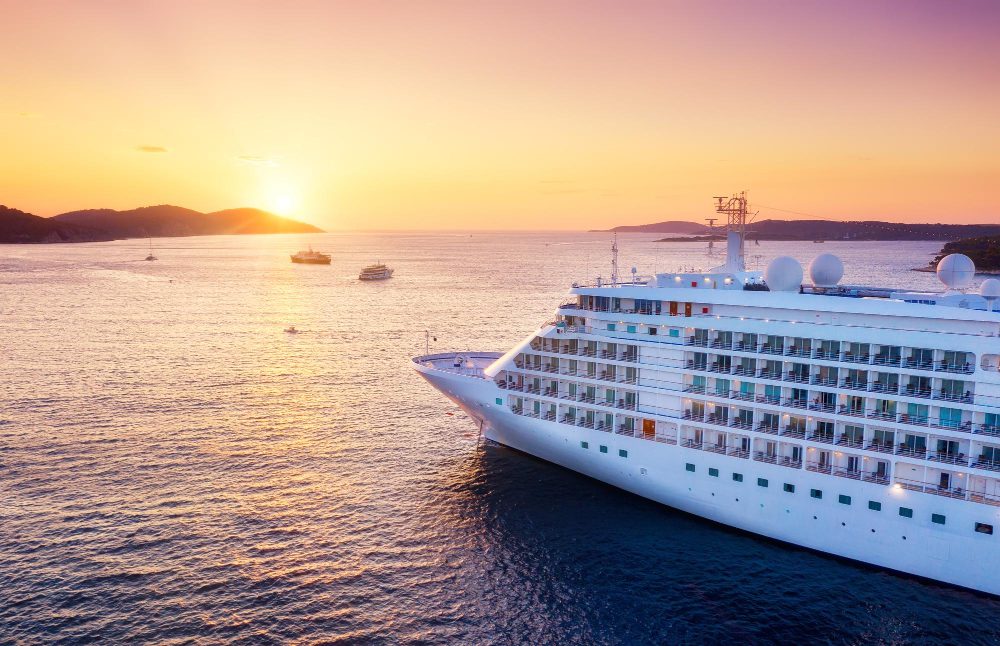Where do cruises make the most money?
Cruises have become an increasingly popular vacation choice for travelers around the world. The allure of exploring multiple destinations while enjoying luxurious amenities and entertainment onboard has made cruising a booming industry. However, have you ever wondered where cruises make the most money? Let’s explore the top revenue-generating sources for the cruise industry.
Cruise Ticket Sales
The primary source of revenue for cruise lines is through ticket sales. Passengers pay for their accommodations, dining, and entertainment packages, which collectively contribute to the cruise line’s earnings. The pricing of cruise tickets varies based on several factors, including the duration of the cruise, cabin category, onboard amenities, and the destinations included in the itinerary.
The Power of Onboard Activities and Services
Once passengers are onboard, cruise lines generate substantial revenue through various activities and services. From casinos, spa treatments, specialty dining experiences, and organized excursions at ports of call, these additional offerings provide an opportunity for passengers to enhance their cruise experience for an extra cost. Such onboard activities and services offer a considerable revenue stream for cruise lines.
The Most Profitable Itineraries
While cruises cater to a global audience, certain destinations are more popular and lucrative than others. The profitability of an itinerary depends on factors such as demand, port fees, and overall passenger spending at each port. Cruise lines carefully select destinations that not only attract a significant number of passengers but also offer opportunities for passengers to spend money on excursions, shopping, and dining during their time ashore.
According to industry reports, the Caribbean remains one of the most profitable regions for cruise lines. The pristine beaches, crystal-clear waters, and vibrant culture draw millions of travelers every year. Other profitable regions include the Mediterranean, Alaska, and Northern Europe, which offer unique experiences and breathtaking landscapes.
Onboard Shopping Opportunities
Onboard shopping is yet another significant revenue generator for cruise lines. From duty-free boutiques selling high-end jewelry and luxury brands to souvenir shops offering cruise-themed merchandise, passengers can indulge in retail therapy while at sea. Cruise lines often partner with renowned brands to create onboard shopping experiences tailored to their target audience, further boosting their revenue streams.
The Influence of Beverage and Alcohol Sales
Beverage and alcohol sales contribute significantly to a cruise line’s bottom line. While some cruise lines offer all-inclusive drink packages, others charge for individual drinks. Alcoholic beverages such as cocktails, wine, and beer are popular choices among passengers looking to unwind during their cruise vacation. Additionally, specialty coffee and non-alcoholic beverages also contribute to onboard sales.
“Cruising offers a unique business model where the ship serves as the destination, accommodation, and entertainment hub, allowing cruise lines to generate revenue from various sources.”
In conclusion, the cruise industry generates revenue through a combination of ticket sales, onboard activities and services, profitable itineraries, onboard shopping, and beverage sales. The success of a cruise line depends on its ability to attract passengers and provide enticing opportunities to enhance their vacation experience. By strategically focusing on these revenue streams, cruise lines can continue to flourish and offer unforgettable journeys to travelers worldwide.
How much debt is Carnival Cruises in?
Carnival Cruises, one of the largest cruise line operators in the world, has faced significant financial challenges in recent times. The COVID-19 pandemic has hit the travel industry hard, including the cruise industry, with widespread cancellations and halted operations. As a result, Carnival Cruises has accumulated a substantial amount of debt.
The impact of the pandemic
The pandemic forced Carnival Cruises to suspend its operations, leading to a severe decline in revenue. With no sailings and limited bookings, the company’s cash flow dwindled. In order to stay afloat, Carnival had to raise capital by issuing billions of dollars in debt and equity.
Carnival Cruises’ current debt position
As of [insert date], Carnival Cruises carries a total debt of approximately $[insert amount]. This debt includes both short-term and long-term obligations. The company has taken on additional borrowing to meet its immediate financial needs and finance ongoing operations.
Factors contributing to the debt
Several factors have contributed to Carnival Cruises’ increased debt load. These include the costs associated with fleet maintenance and upgrades, the acquisition of new ships, and the repayment of existing debt. Additionally, the pandemic-related expenses such as refunds, crew repatriation, and enhanced health and safety measures have further strained the company’s finances.
Management’s efforts to address the debt
Carnival Cruises’ management has been actively working to address the debt situation. They have implemented cost-cutting measures, including reducing non-essential expenses and optimizing operational efficiency. The company has also explored various financing options, such as equity offerings and debt refinancing, to improve its liquidity position and repay its outstanding obligations.
Financial outlook and recovery
Despite the challenges, Carnival Cruises remains optimistic about its future prospects. The company expects a gradual recovery as travel restrictions are lifted and consumer confidence returns. By implementing strategic initiatives and adapting to changing market conditions, Carnival aims to reduce its debt burden and position itself for long-term success.
Implications for stakeholders
The high level of debt can have implications for various stakeholders. Shareholders may experience dilution due to the issuance of additional equity, while creditors may be concerned about the company’s ability to meet its financial obligations. However, Carnival Cruises’ efforts to address the debt and its potential recovery can bring hope to investors and creditors alike.
Which Cruise Line Makes the Most Profit?
Introduction
In the world of luxury travel, cruise lines have become increasingly popular among vacationers. With various amenities and itineraries to choose from, these floating resorts offer a unique experience for travelers. While passengers enjoy their time onboard, have you ever wondered which cruise line is making the most profit?
The Top Contenders
When it comes to profitability, there are a few major players in the cruise industry. These include Carnival Corporation, Royal Caribbean Group, and Norwegian Cruise Line Holdings. Let’s delve into each of them:
Carnival Corporation
Carnival Corporation is the largest cruise company globally, operating numerous brands such as Carnival Cruise Line, Princess Cruises, and Holland America Line. With a fleet of over 100 ships, Carnival Corporation generated a total revenue of $20.8 billion in 2019.
Royal Caribbean Group
Royal Caribbean Group, another industry giant, owns Royal Caribbean International, Celebrity Cruises, and Azamara. The company’s commitment to innovation and outstanding customer service has helped them generate a revenue of $11.5 billion in 2019.
Norwegian Cruise Line Holdings
Norwegian Cruise Line Holdings operates three cruise brands: Norwegian Cruise Line, Oceania Cruises, and Regent Seven Seas Cruises. With a focus on freestyle cruising and personalized experiences, the company generated a revenue of $6.5 billion in 2019.
Profitability Analysis
While revenue is an essential metric, it does not directly reflect a company’s profitability. Factors such as operating costs, marketing expenses, and debt can significantly impact a cruise line’s profit. To determine which cruise line is making the most profit, we need to consider their net income.
Net Income Comparison
In 2019, Carnival Corporation reported a net income of $3 billion, Royal Caribbean Group reported a net income of $1.9 billion, and Norwegian Cruise Line Holdings reported a net income of $930 million. It’s important to note that these figures can fluctuate from year to year due to various economic factors.
The Bottom Line
“While Carnival Corporation has the highest revenue, Norwegian Cruise Line Holdings boasts the highest profitability.”
In conclusion, while revenue is a crucial factor in determining the success of a cruise line, profitability should also be taken into account. Norwegian Cruise Line Holdings showcases strong profitability figures, indicating efficient cost management and successful business strategies. However, all three major cruise lines mentioned above are successful players in the industry, offering unique experiences to travelers worldwide.
Is it Good to Buy Cruise Stock Now?
The cruise industry has faced significant challenges in recent years, including the COVID-19 pandemic and economic downturn. As a result, cruise stocks have experienced volatile fluctuations. Investors are now left wondering if it is a good time to buy cruise stock. Let’s examine the factors to consider before making an investment decision.
Current Market Conditions
The first factor to analyze is the current market conditions. Assessing the overall stock market trends and the performance of the cruise industry can provide valuable insights. It is crucial to research the financial health and growth potential of the specific cruise companies you are interested in.
Risk and Volatility
Investing in cruise stocks entails a certain degree of risk and volatility. The unpredictability of future events, such as viral outbreaks or geopolitical tensions, can significantly impact the performance of cruise stocks. Consider your risk tolerance and investment objectives before making a decision.
Industry Outlook
The long-term industry outlook is another important aspect to evaluate. Research industry reports, consumer trends, and forecasts to gauge the recovery and growth potential of the cruise industry. Keep in mind that the recovery process may be gradual and contingent on various external factors.
Competitive Landscape
Assess the competitive landscape within the cruise industry. Identify the key players, market share, and their strategies for growth. Understanding how the cruise companies differentiate themselves and adapt to changing consumer preferences can help you make an informed investment decision.
Financial Performance
Analyze the historical financial performance of the cruise companies you are considering. Evaluate their revenue growth, profitability, debt levels, and cash flow. Compare these metrics to their peers in the industry to gain a comprehensive understanding of their financial strength.
Expert Opinions
Consider expert opinions and recommendations from financial analysts who closely follow the cruise industry. Their insights can provide valuable guidance in evaluating potential investment opportunities.
Investment Strategy
Before buying cruise stocks, it is essential to have a well-defined investment strategy. Determine your investment horizon, diversification goals, and portfolio allocation. Consider consulting with a financial advisor to align your investment decision with your broader financial objectives.
Conclusion
In conclusion, Carnival Cruises has accumulated a significant amount of debt as a result of the COVID-19 pandemic. The company’s management is actively working towards reducing this debt burden and navigating through these challenging times. With the gradual return of travel and the implementation of strategic measures, Carnival Cruises aims to recover and strengthen its financial position in the future.
In conclusion, deciding whether it is a good time to buy cruise stock requires careful consideration of various factors. Conduct thorough research on the current market conditions, industry outlook, financial performance, and expert opinions. Assess your risk tolerance and investment strategy to make an informed decision. Remember, investing in individual stocks carries inherent risks, so diversification is key to managing those risks.


